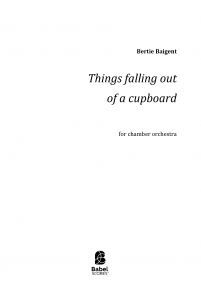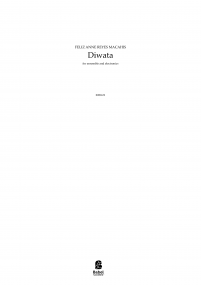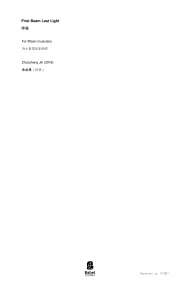Atmen Sie mit mir...
for ensemble in 3 groups & baroque organ
14,42 €
Version numérique (+0,00 €) à télécharger
Version papier (+21,40 € impression et livraison ). Colissimo7-14 days aprox.
Chez BabelScores, quand vous achetez une partition, vous pouvez ensuite contacter directement le compositeur ici même !
Caractéristiques
Region
Europe
Estimated Duration
20 - 25min
Date
2021
ISMN : 979-0-2325-5959-9
Notes sur cette pièce
Ajouter à une playlist
- Identifiez-vous pour créer une liste
Atmen – Breath.
From the onset my musical thinking has always aimed at composing out the abundance of mediations between a number of extremes, or pairs of opposites (like a single breath can be seen as the opposites of inhaling / exhaling): between sound and noise, extreme depth and highest height, durations of such length that they can hardly still be perceived, and the most fleeting moments, between greatest complexity and simplest static. Between the absolute periodicity and complete aperiodicity of rhythms, between scrupulously notated groups of notes or parts of a work and their free combination for performances, between the most detailed through-composed sections of works and passages left to the intuition of the interpreter.
But breathing is also rhythm: oscillation or vibration. On the one hand, this is a term from physical acoustics. On the other hand, “vibration” also has a metaphysical connotation. (In the context of a “theology of dance”, as the theologian Hugo Rahner has deciphered it from Greek and early Christian texts in his book Man At Play, it is “the free-soaring motion [ Beschwingung ] which God as creative principle has imparted to the cosmos.)
If music is the interplay of proportionate vibrations which move in time and which can reoccur cyclically but always generate new forms, then it is possible to say that rhythm is the essence of music, since rhythm is the reoccurrence of a movement as time passes, is repetition of something similar, not the same. The temporal arrow intervenes in the cycle of time and stakes its claim on the new, unrepeatable. In rhythm (and breath) the periodic reoccurrence of something identical, as indicated by the beat, is modulated into aperiodicity.
Instrumentation
Flute|Oboe|Clarinet|Bassoon|Trumpet|Horn (French Horn)|Trombone|Tuba|Percussions (2)|Violin (2)|Viola|Cello|Double bass|Whip
Recording
6 minute except
Score Details
Format - A3 / Tabloid
Pages - 78
Pages - 78









